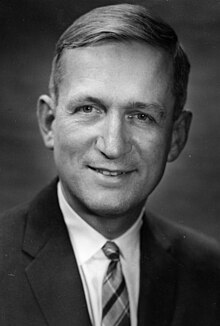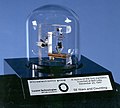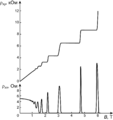Portal:Physics
| Physics Portal Main Page | Physics Textbook | Wikiprojects and things to do |
The Physics Portal


Physics is the natural science of matter, involving the study of matter, its fundamental constituents, its motion and behavior through space and time, and the related entities of energy and force. Physics is one of the most fundamental scientific disciplines, with its main goal being to understand how the universe behaves. A scientist who specializes in the field of physics is called a physicist.
Physics is one of the oldest academic disciplines and, through its inclusion of astronomy, perhaps the oldest. Over much of the past two millennia, physics, chemistry, biology, and certain branches of mathematics were a part of natural philosophy, but during the Scientific Revolution in the 17th century these natural sciences emerged as unique research endeavors in their own right. Physics intersects with many interdisciplinary areas of research, such as biophysics and quantum chemistry, and the boundaries of physics are not rigidly defined. New ideas in physics often explain the fundamental mechanisms studied by other sciences and suggest new avenues of research in these and other academic disciplines such as mathematics and philosophy.
Advances in physics often enable new

A
Did you know -

- ... that Aristotle's ideas of physics held that because an object could not move without an immediate source of energy, arrows created a vacuum behind them that pushed them through the air.
- ... that there are up to 6 candidates for the Theory of everything, minus String theory and Loop quantum gravity?
Selected image -

Related portals
-
Thenational laboratory under the Atomic Energy Commission. (Full article...)
-

Norman Foster Ramsey Jr. (August 27, 1915 – November 4, 2011) was an American physicist who was awarded the 1989 Nobel Prize in Physics for the invention of the separated oscillatory field method (see Ramsey interferometry), which had important applications in the construction of atomic clocks. A physics professor at Harvard University for most of his career, Ramsey also held several posts with such government and international agencies as NATO and the United States Atomic Energy Commission. Among his other accomplishments are helping to found the United States Department of Energy's Brookhaven National Laboratory and Fermilab. (Full article...) -
ESCAP/WMO Typhoon Committee uses four separate classifications for tropical cyclones that exist within the basin, which are based on the estimated maximum sustained winds over a 10-minute period. (Full article...)
-
US customary systems as of 2019)
The history of the metric system began during the Age of Enlightenment with measures of length and weight derived from nature, along with their decimal multiples and fractions. The system became the standard of France and Europe within half a century. Other measures with unity ratios were added, and the system went on to be adopted across the world.
The first practical realisation of the metric system came in 1799, during the French Revolution, after the existing system of measures had become impractical for trade, and was replaced by a decimal system based on the kilogram and the metre. The basic units were taken from the natural world. The unit of length, the metre, was based on the dimensions of the Earth, and the unit of mass, the kilogram, was based on the mass of a volume of water of one litre (a cubic decimetre). Reference copies for both units were manufactured in platinum and remained the standards of measure for the next 90 years. After a period of reversion to the mesures usuelles due to unpopularity of the metric system, the metrication of France and much of Europe was complete by the 1850s. (Full article... -




































































